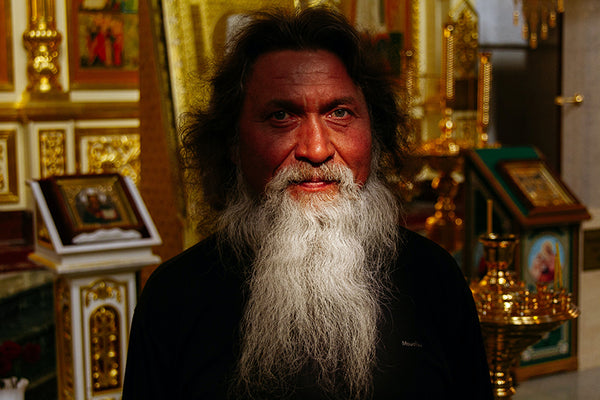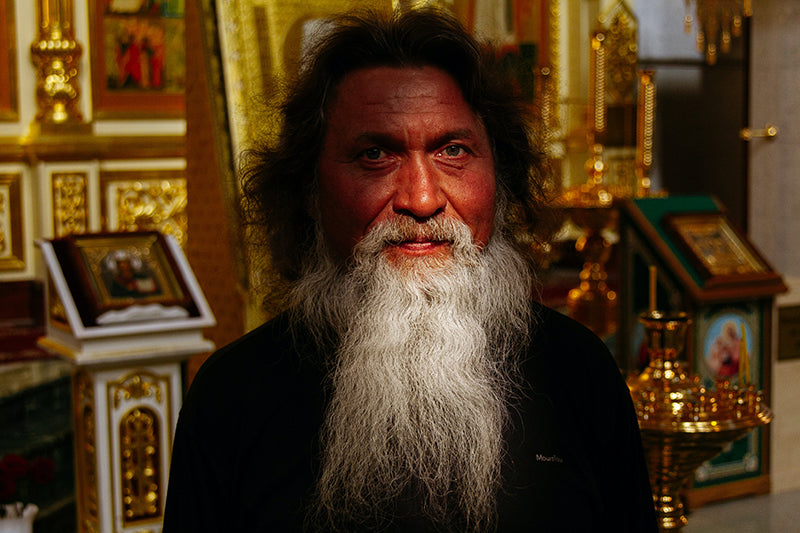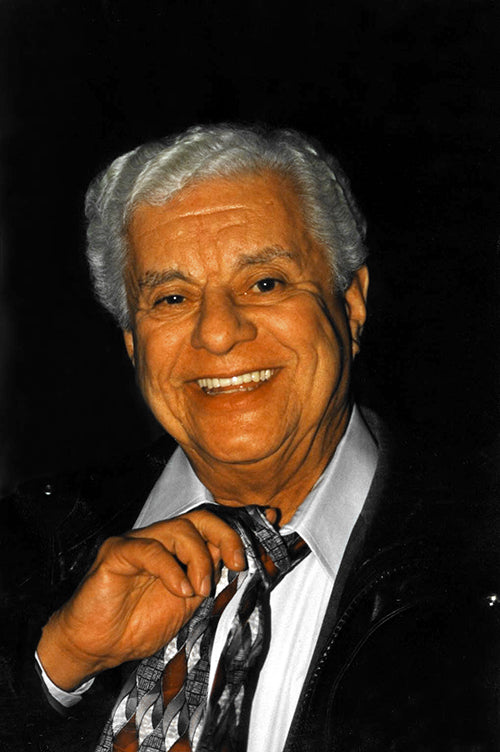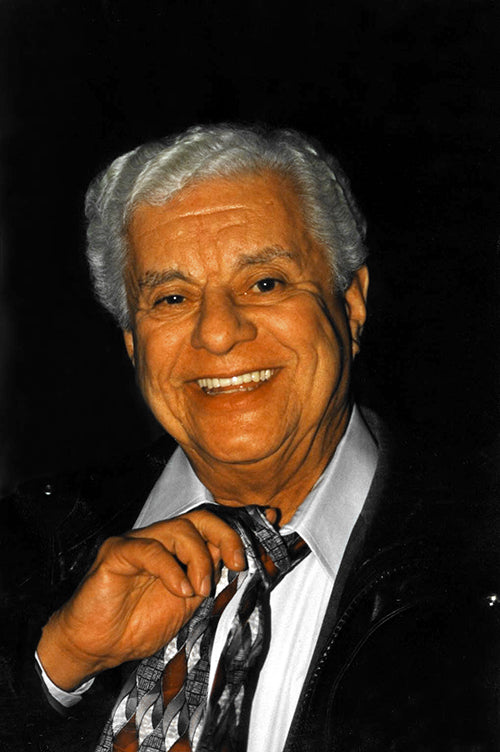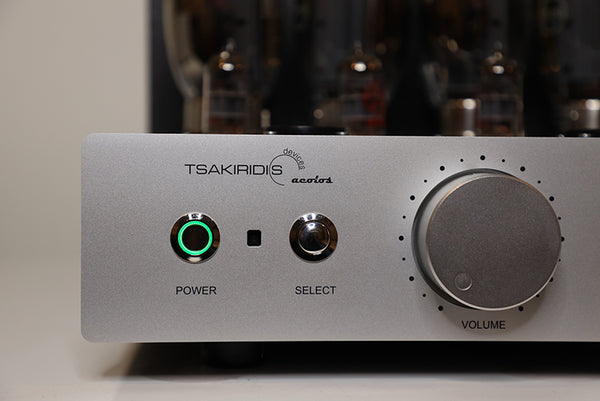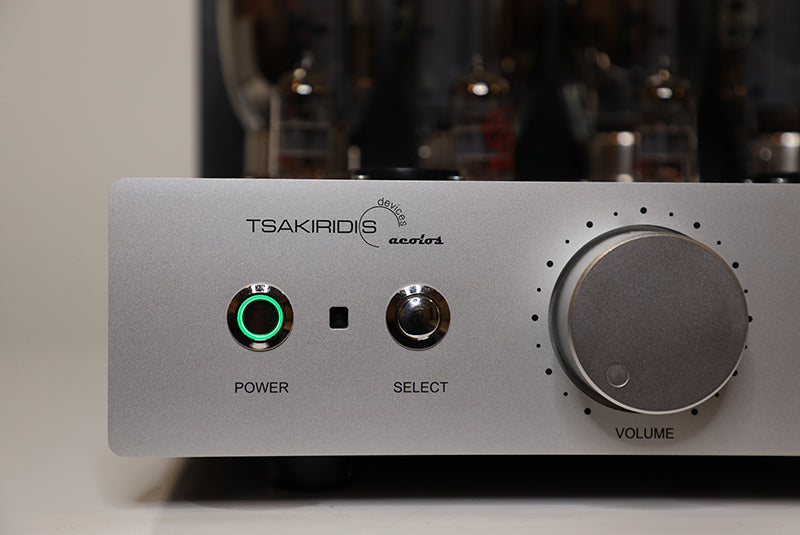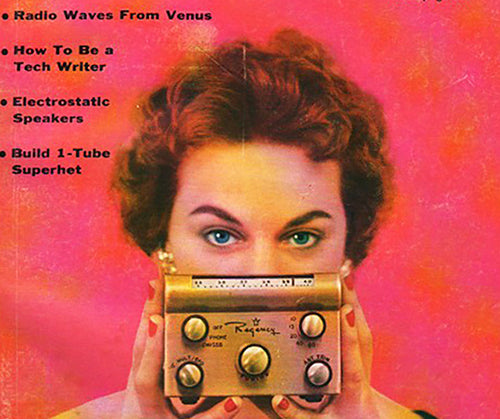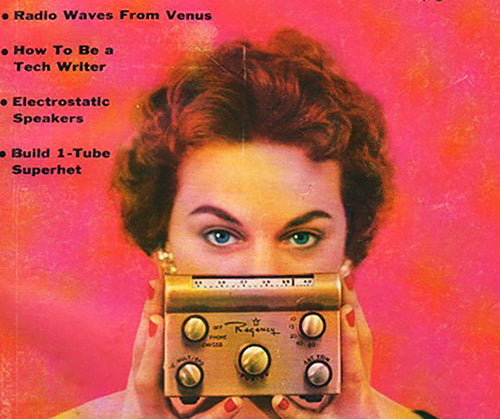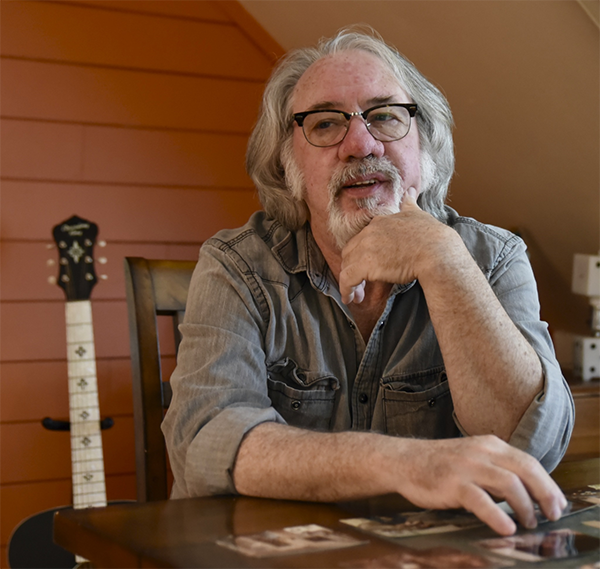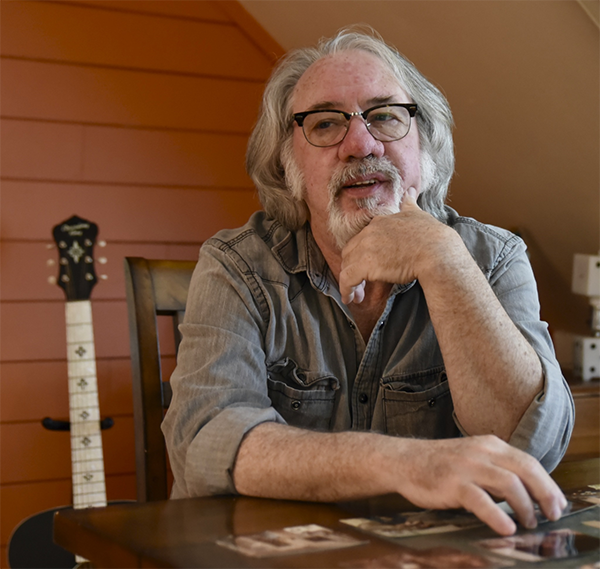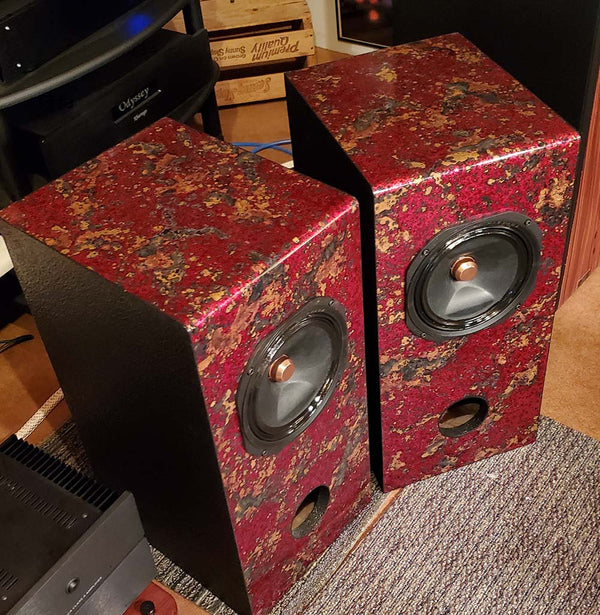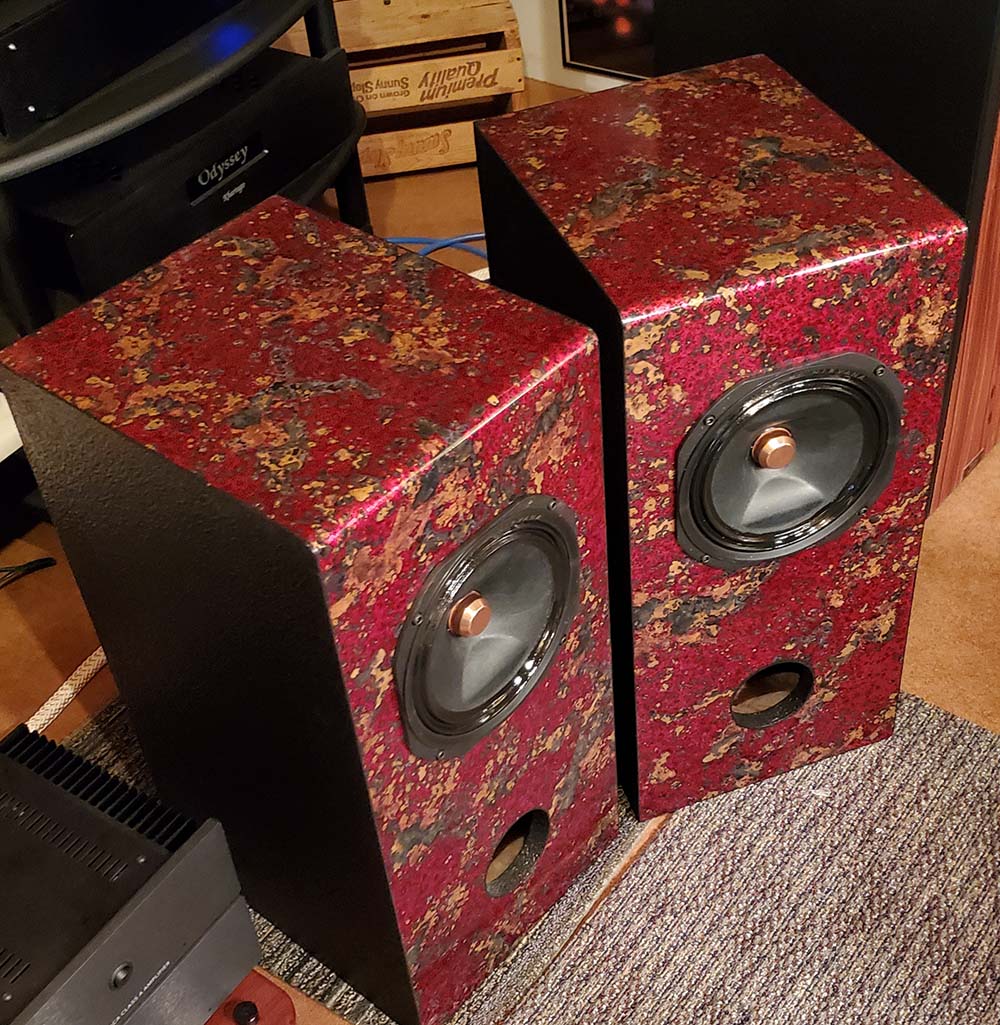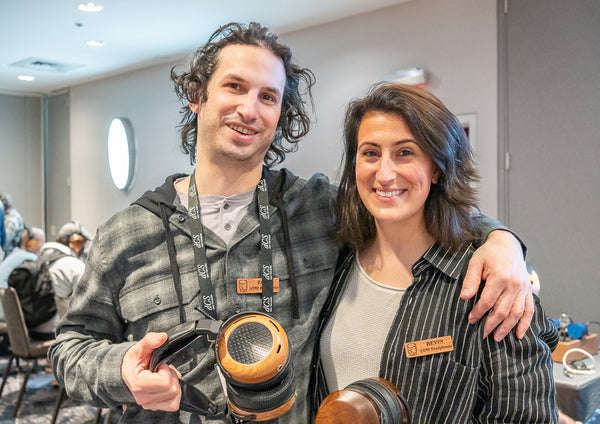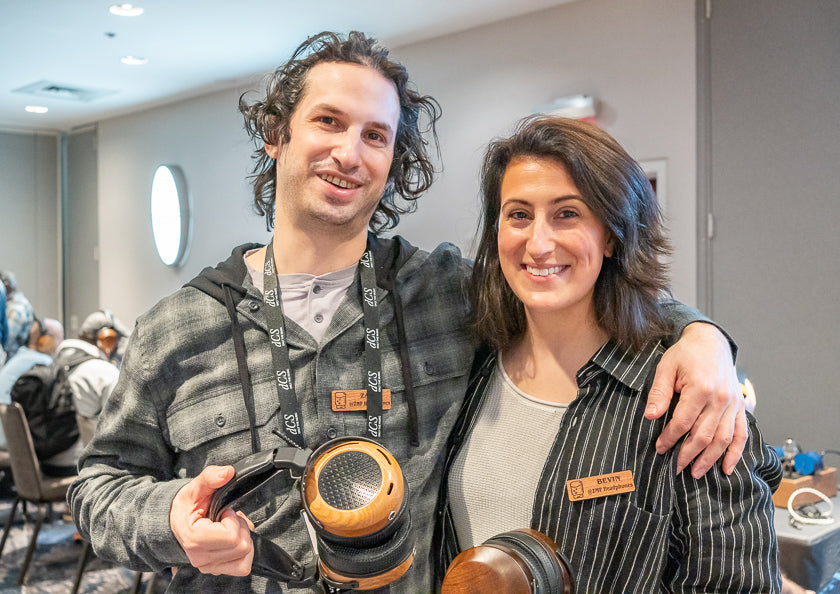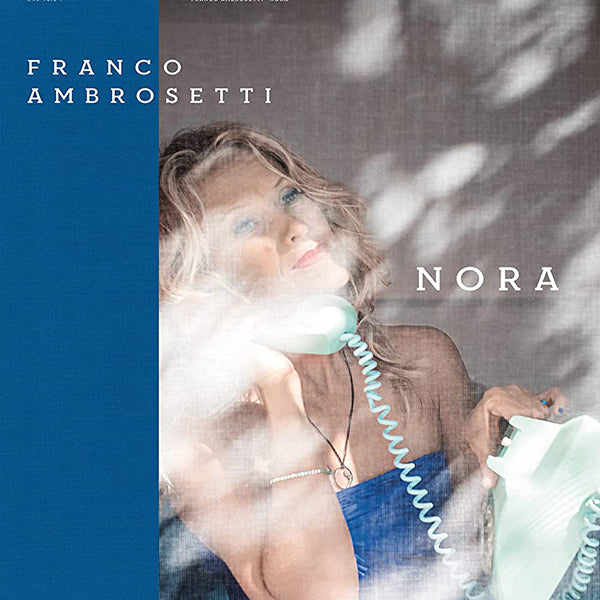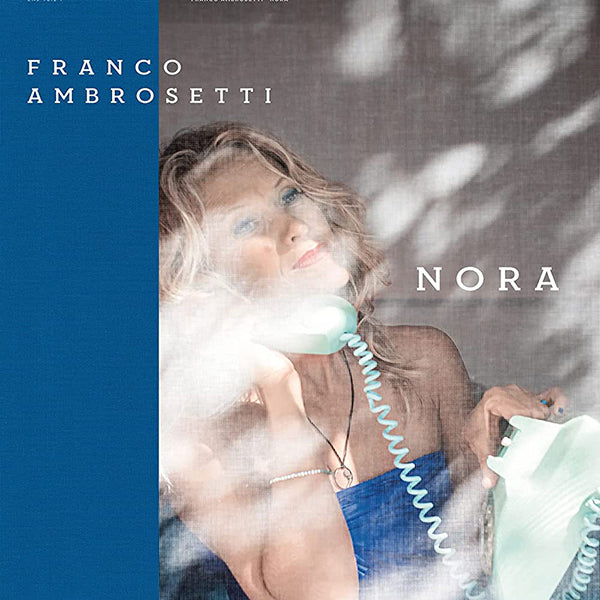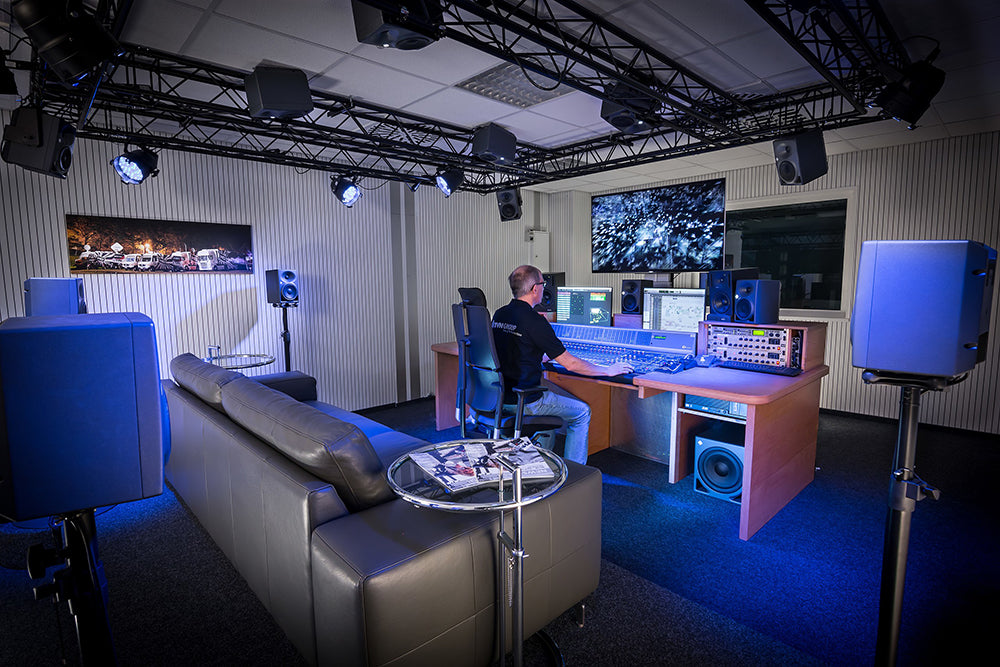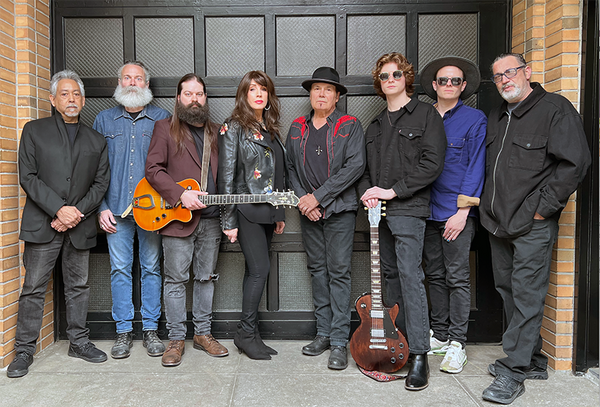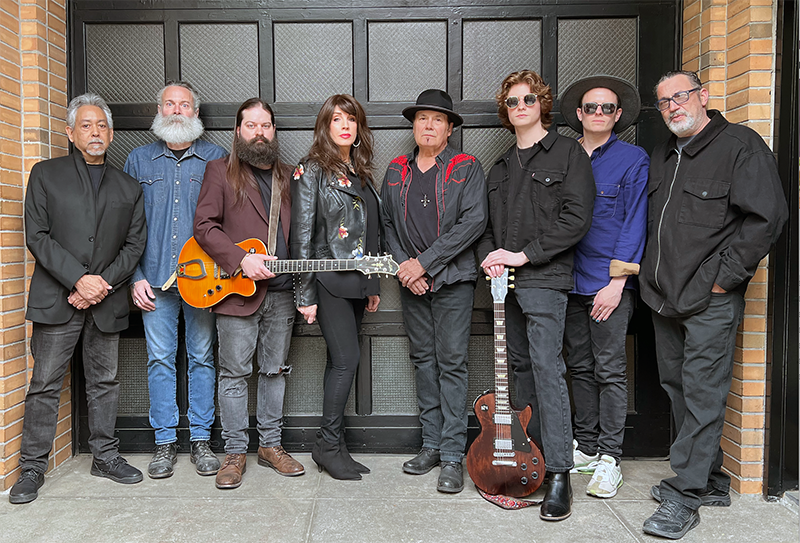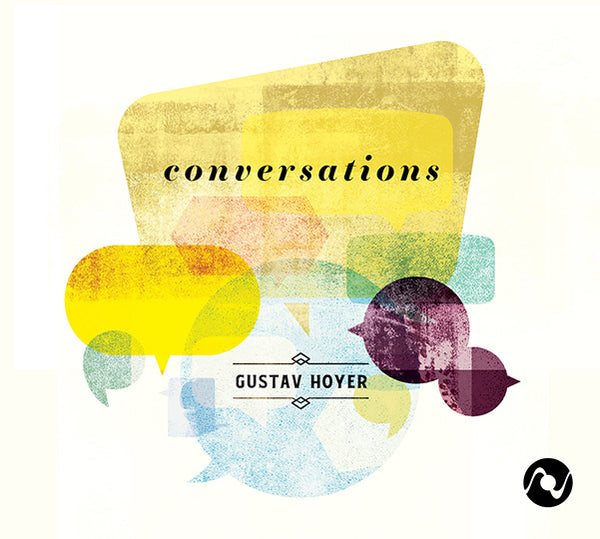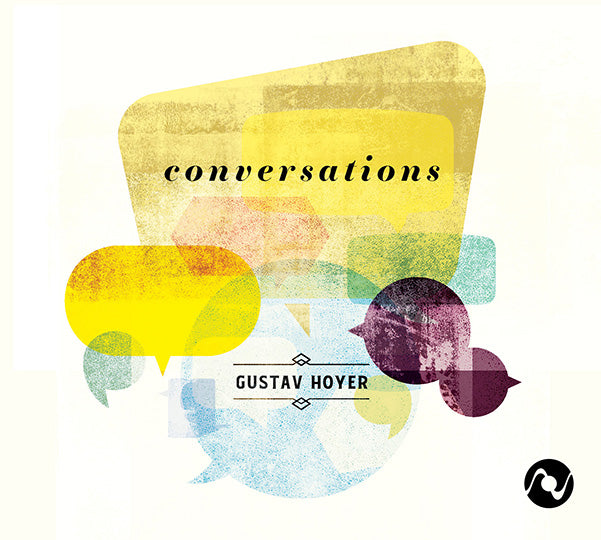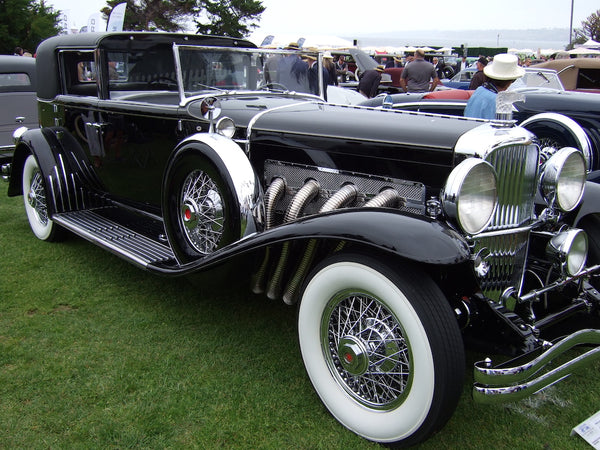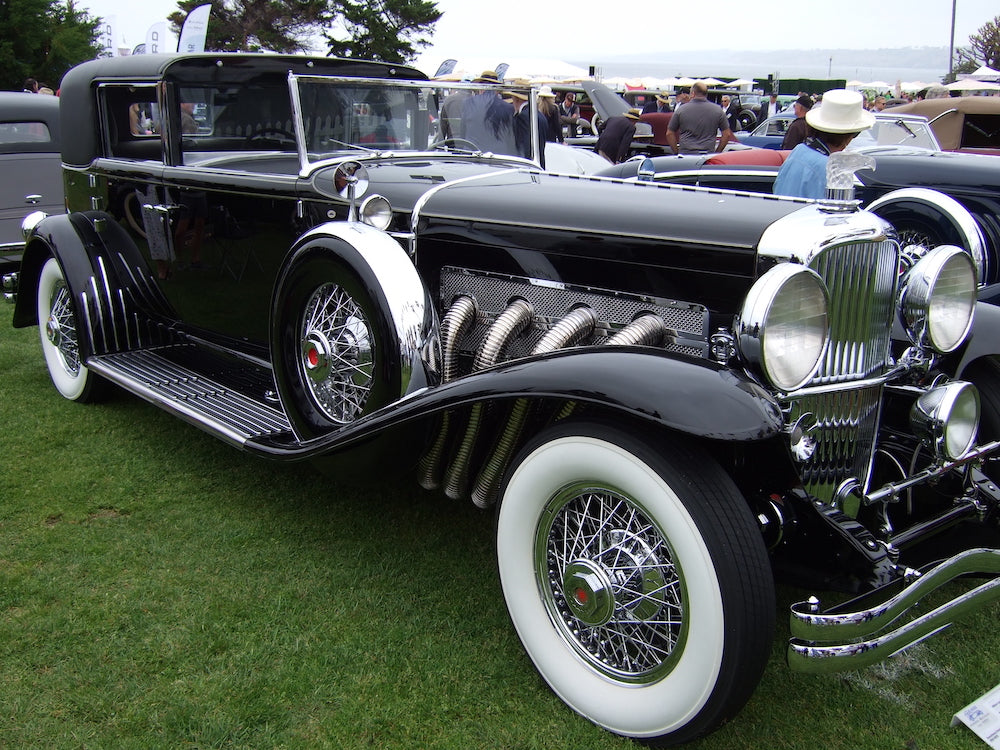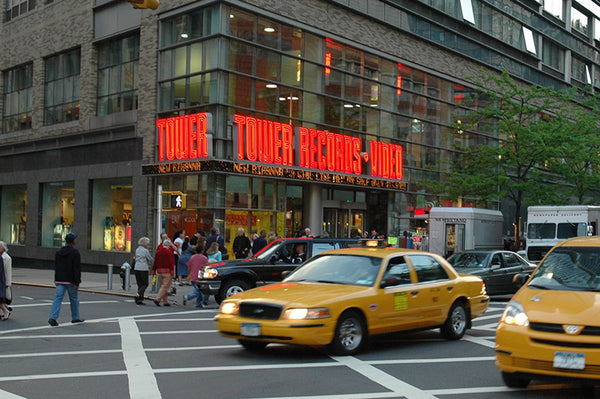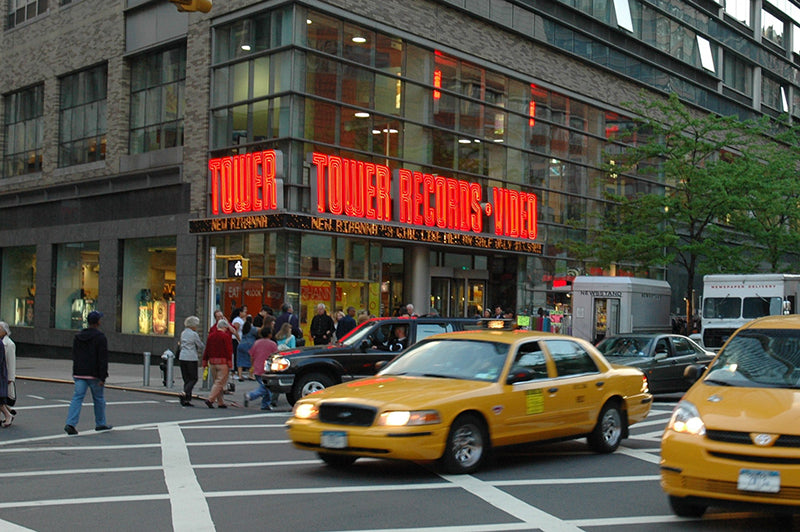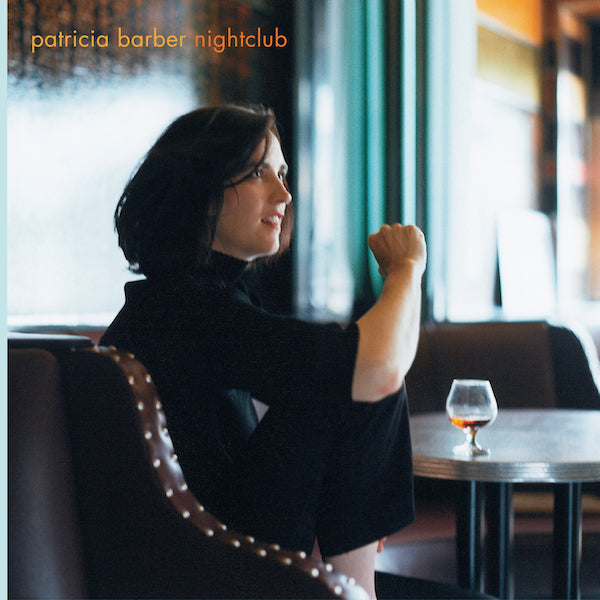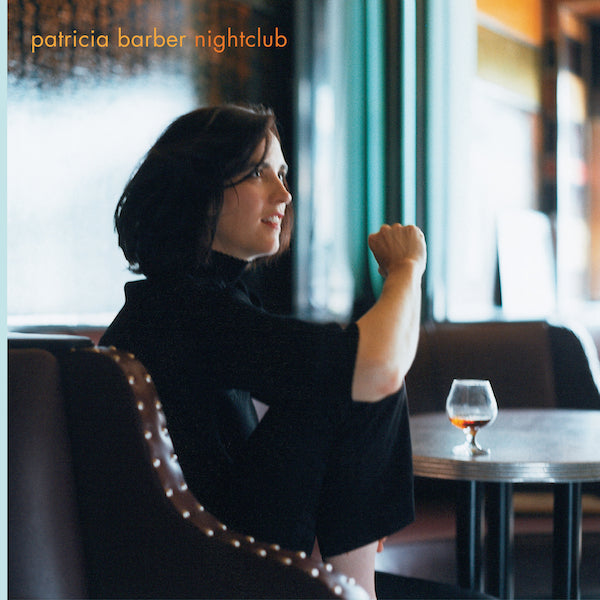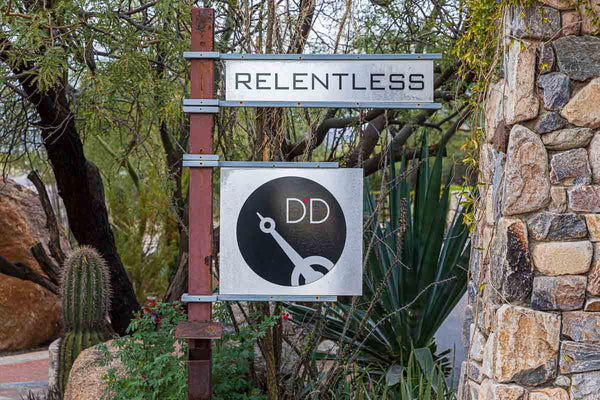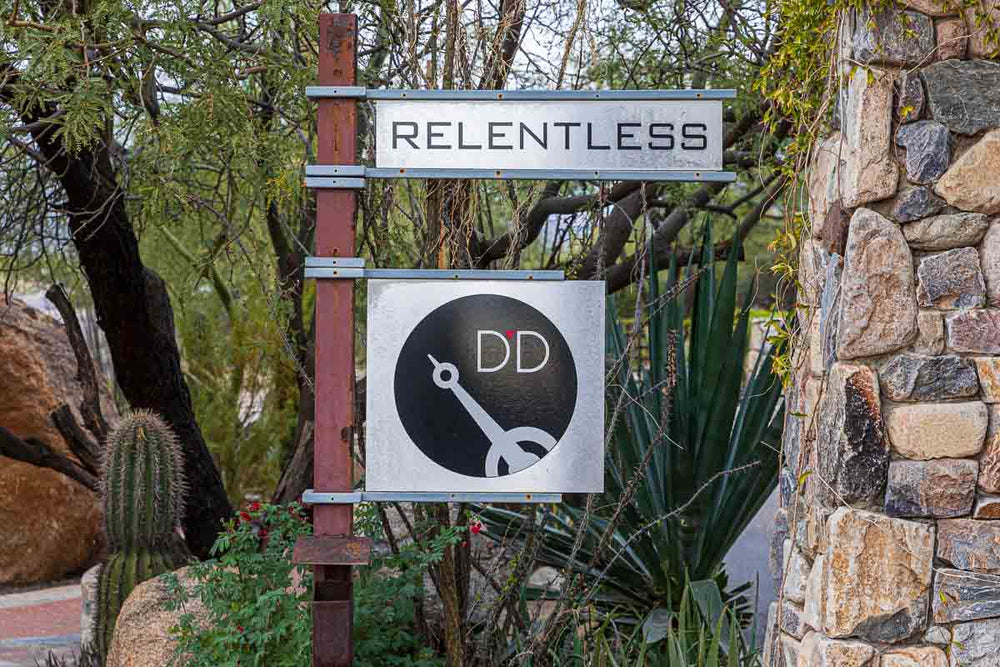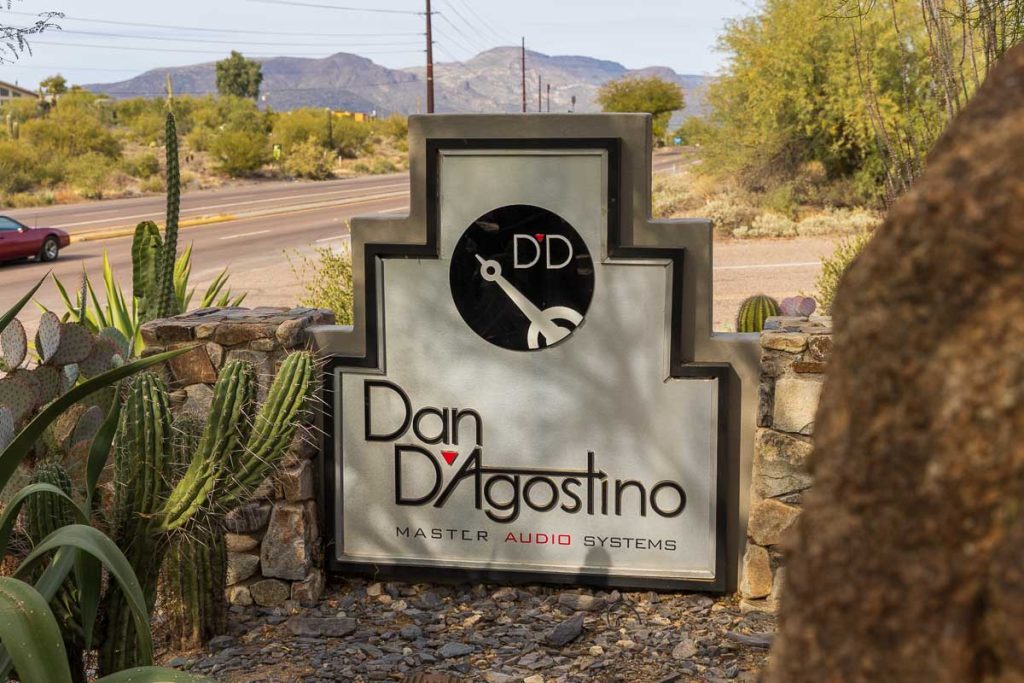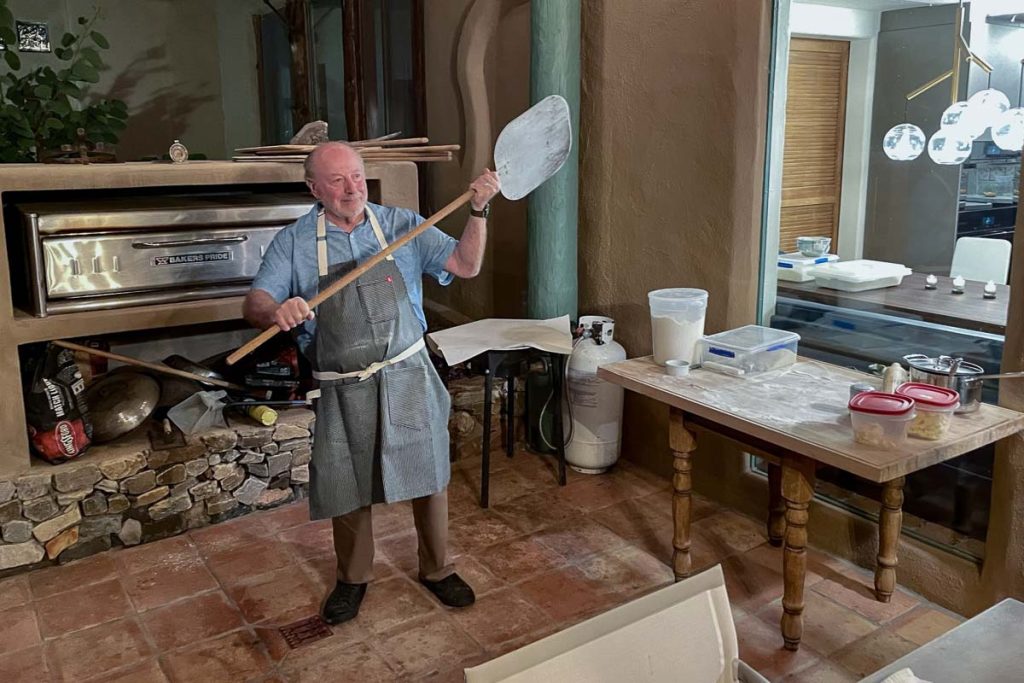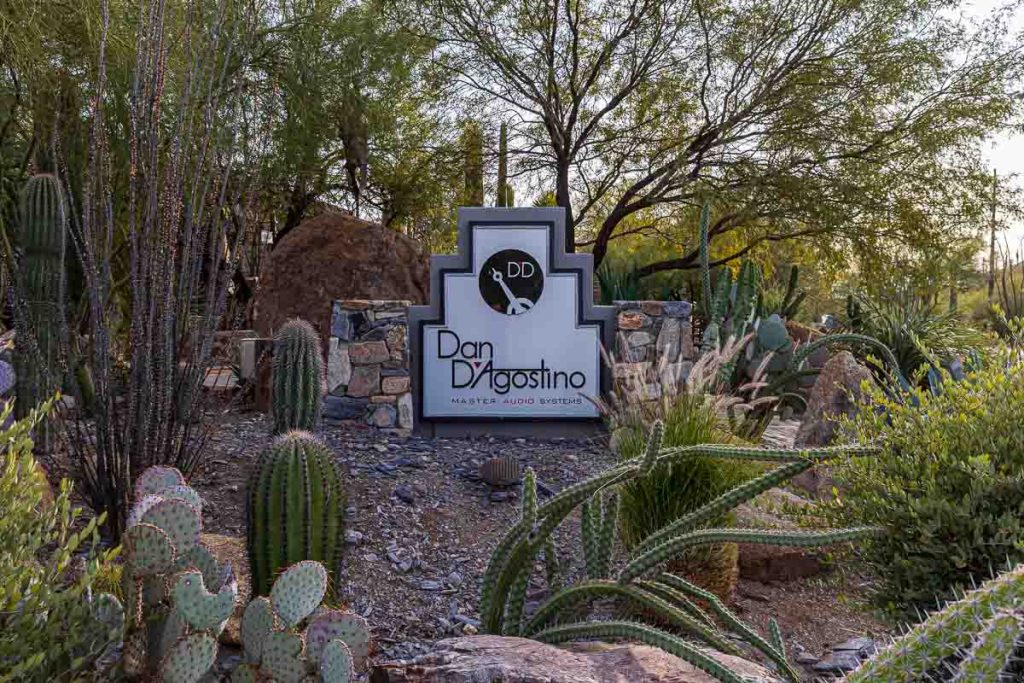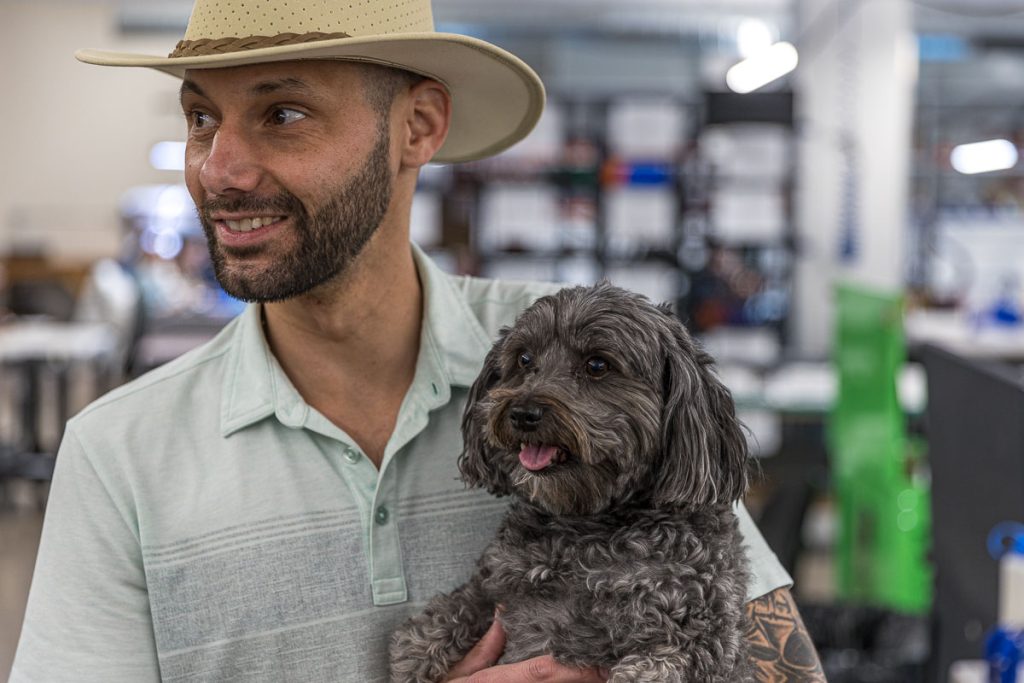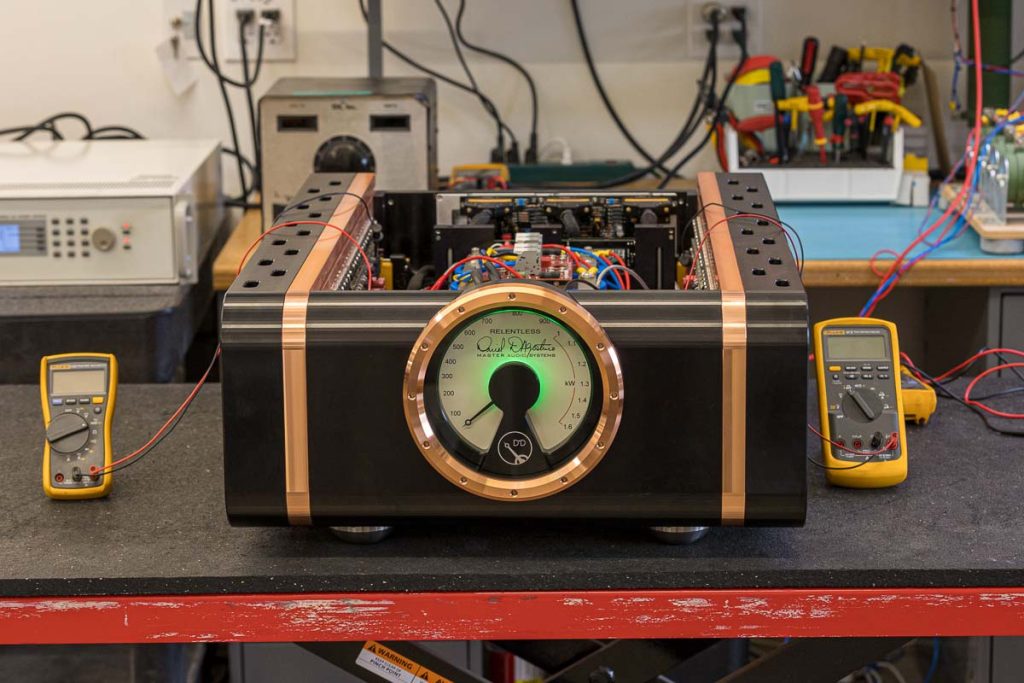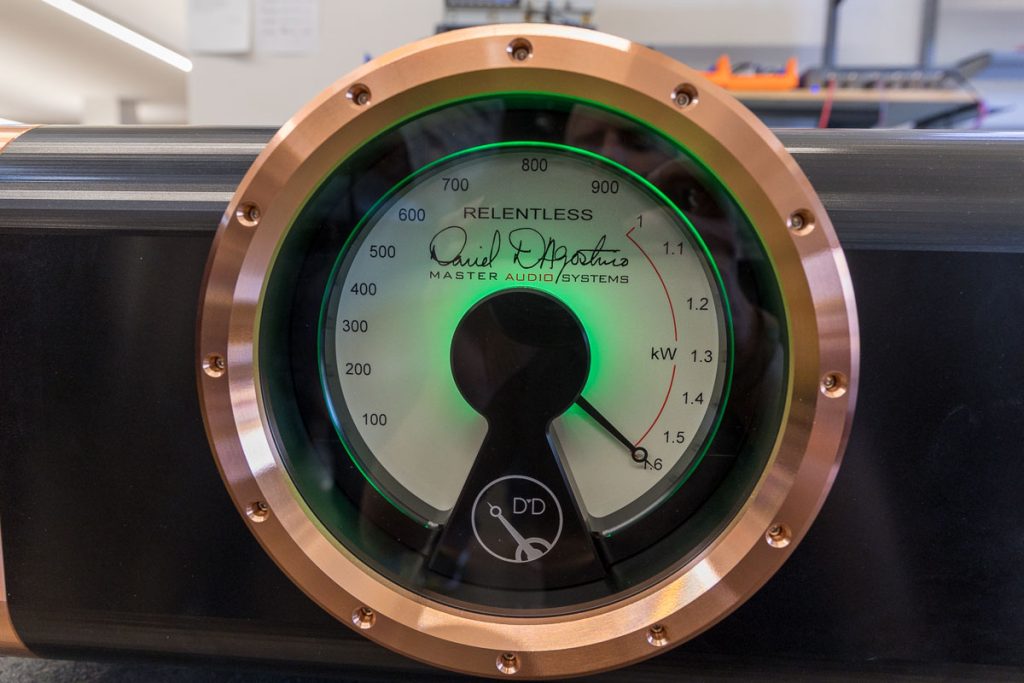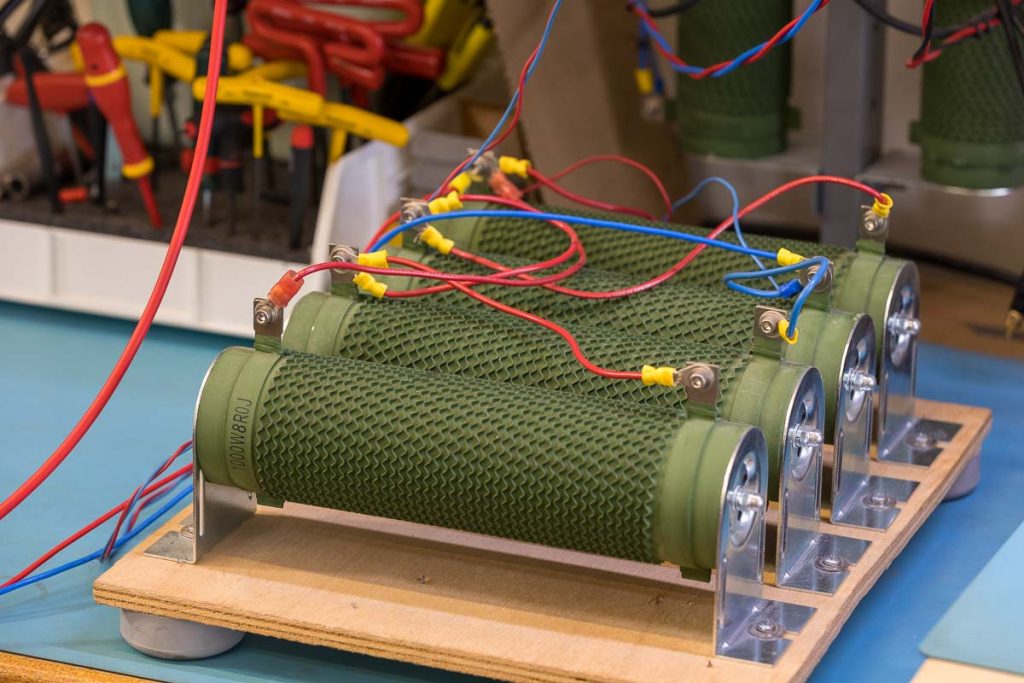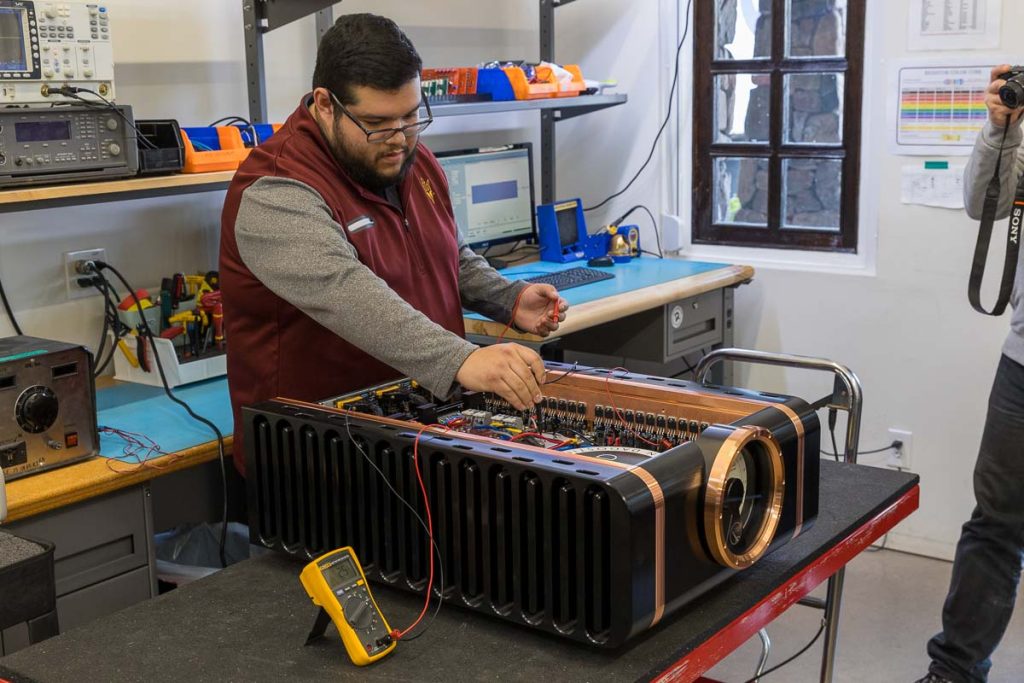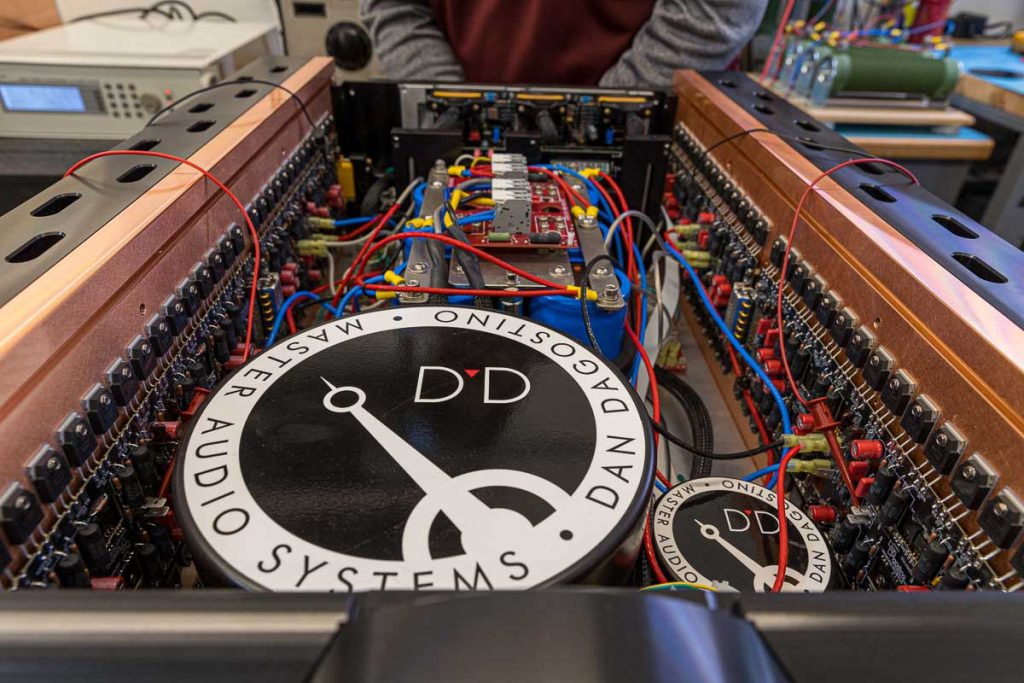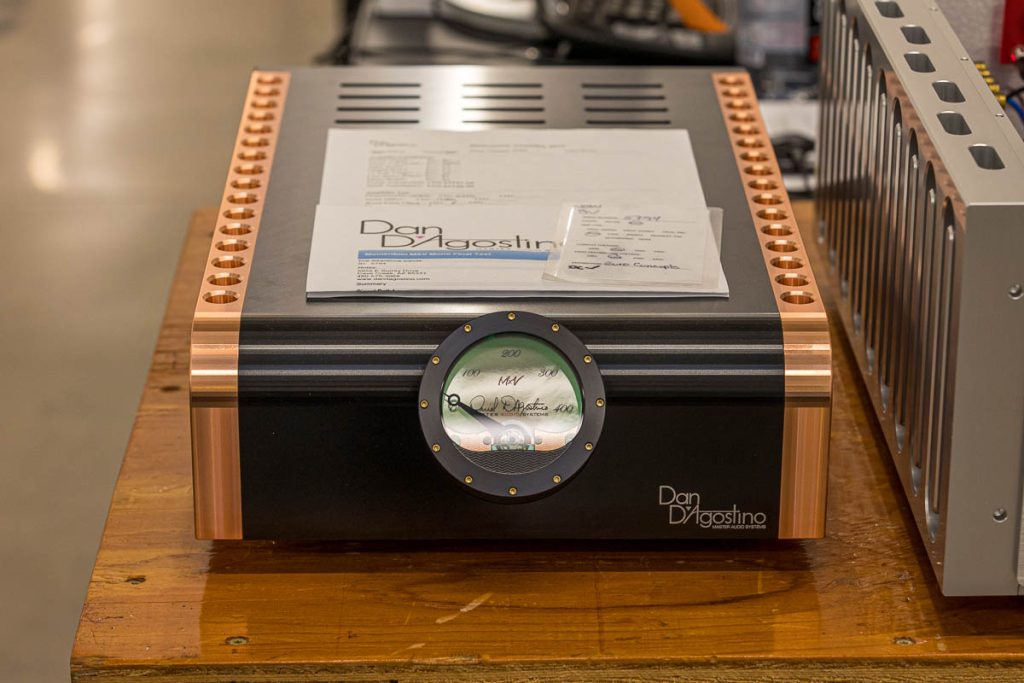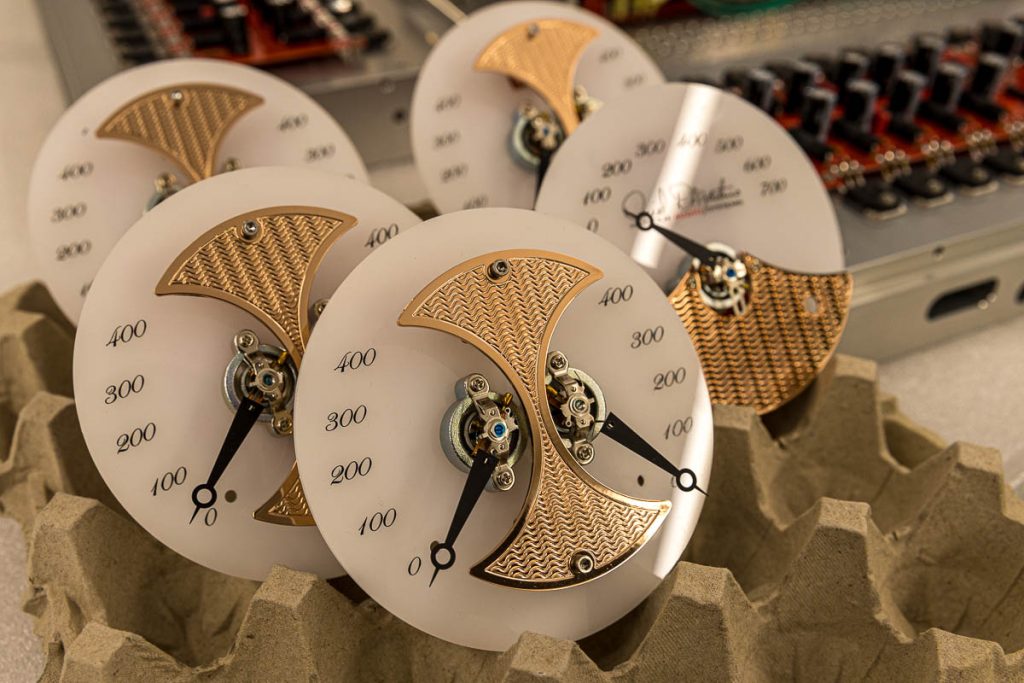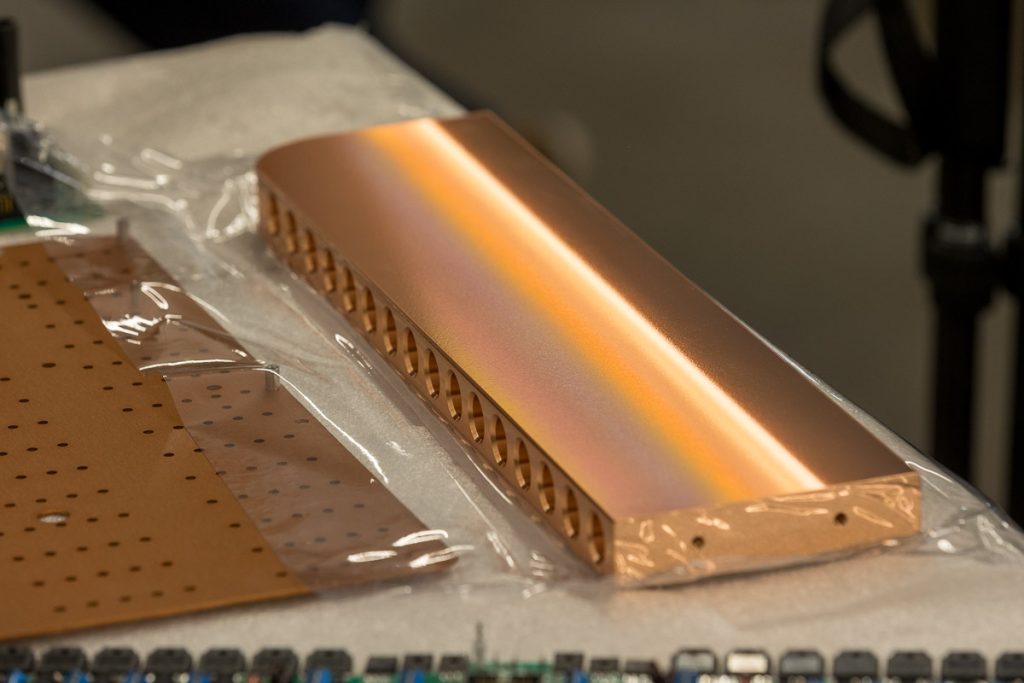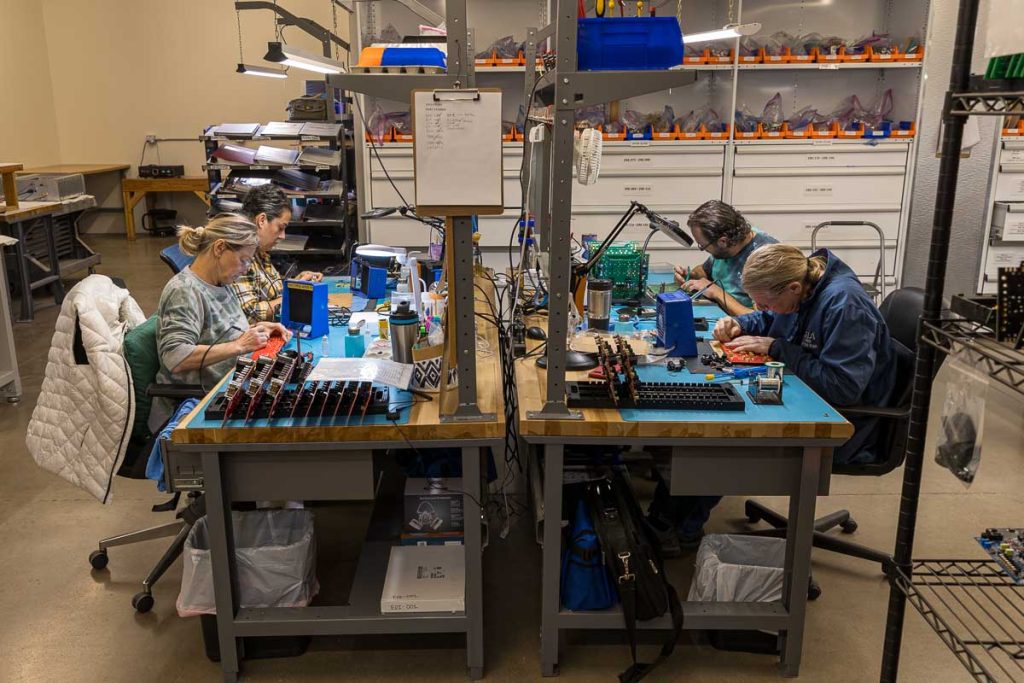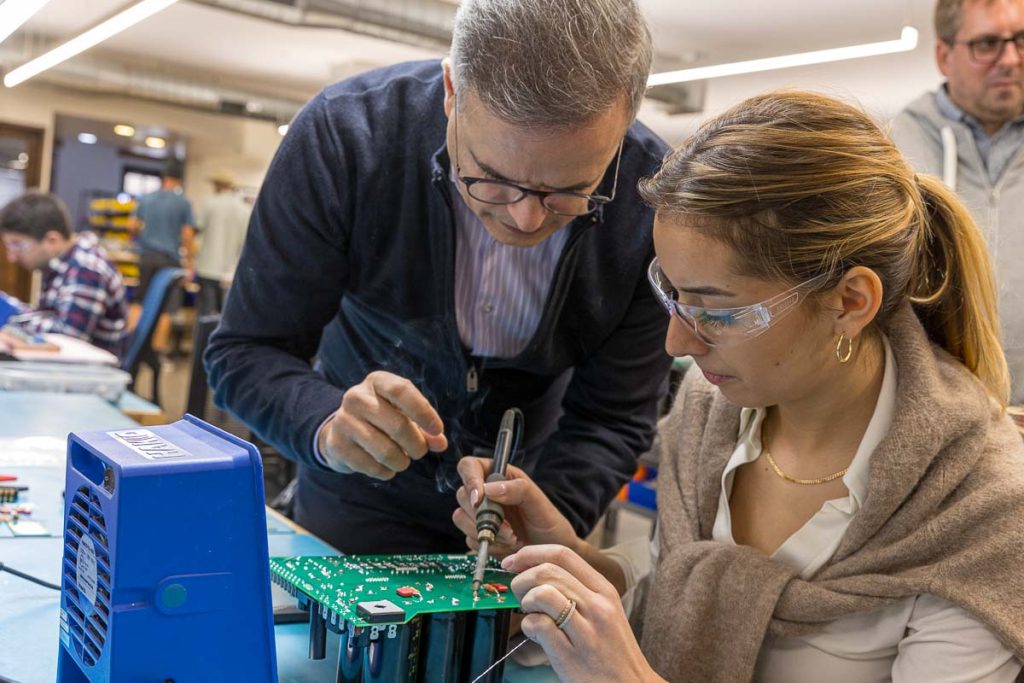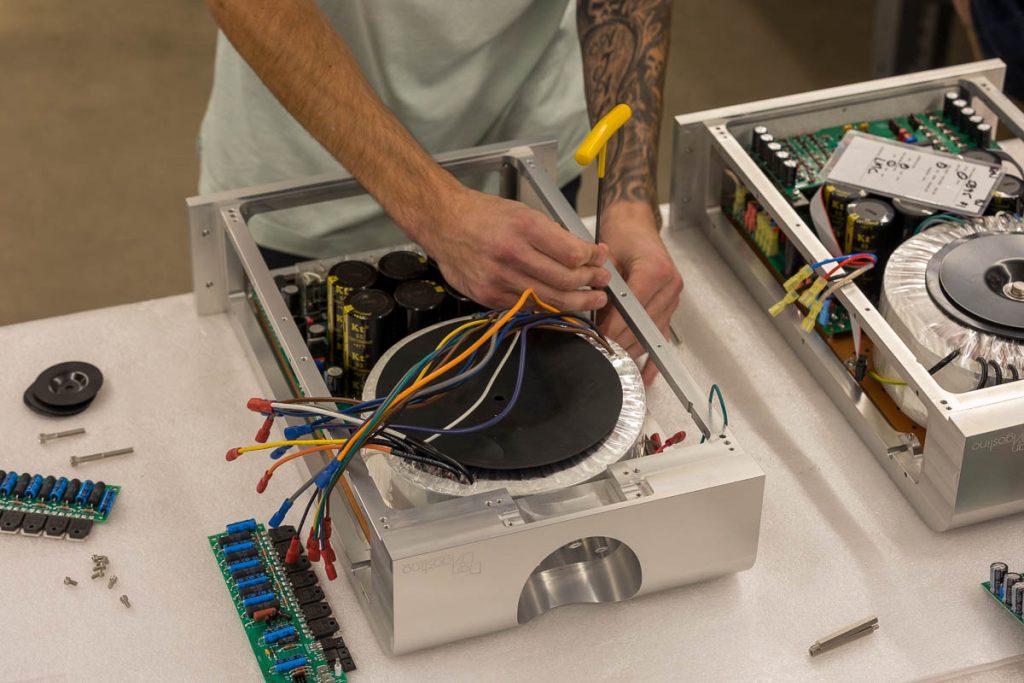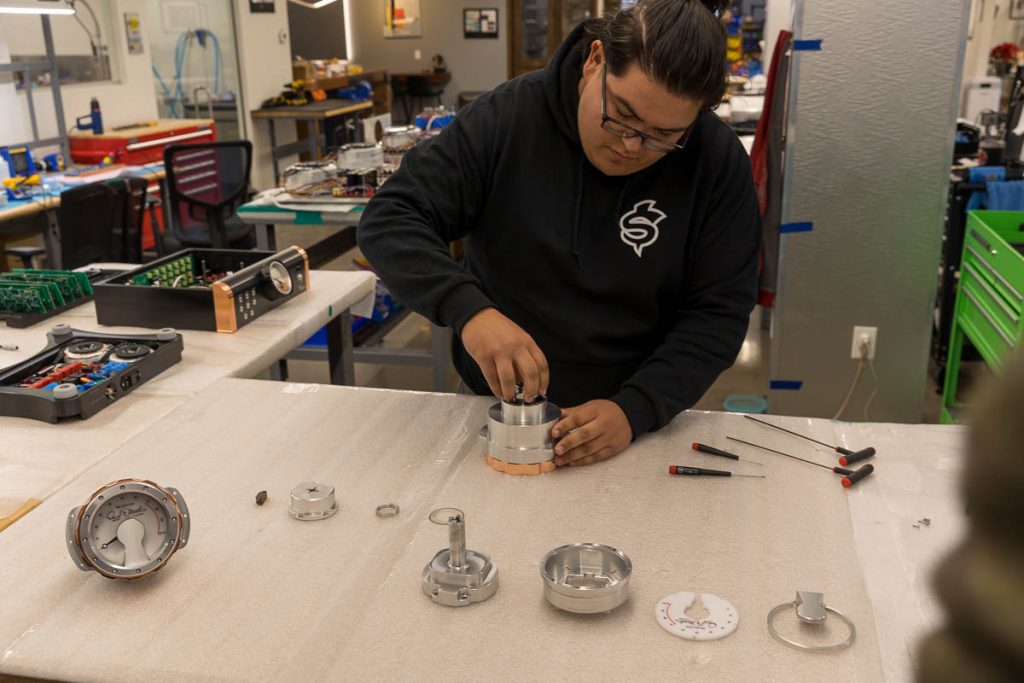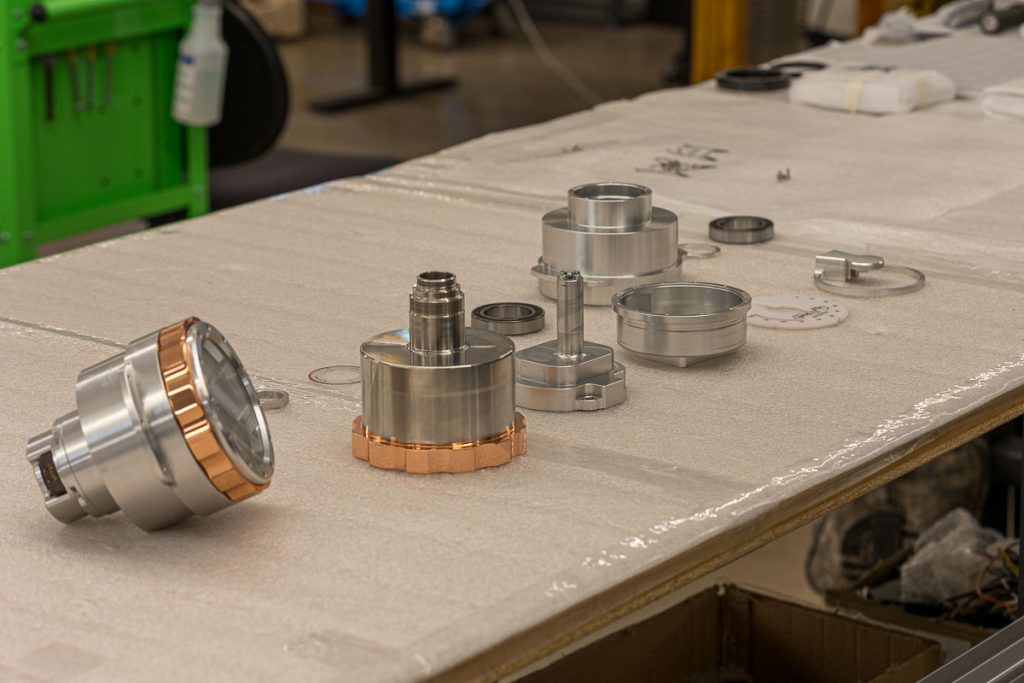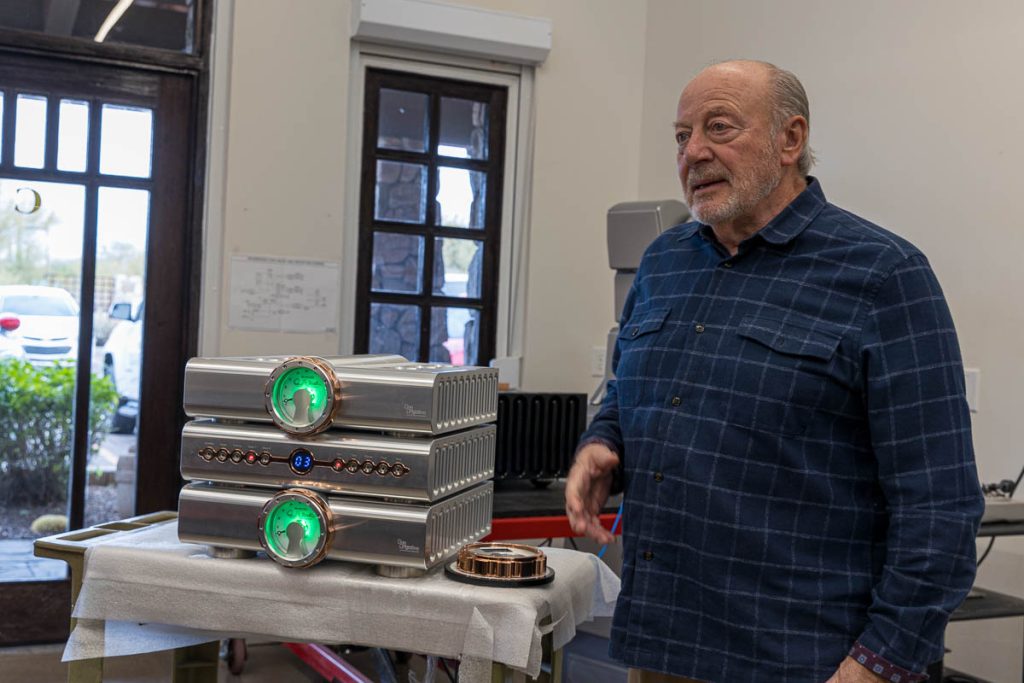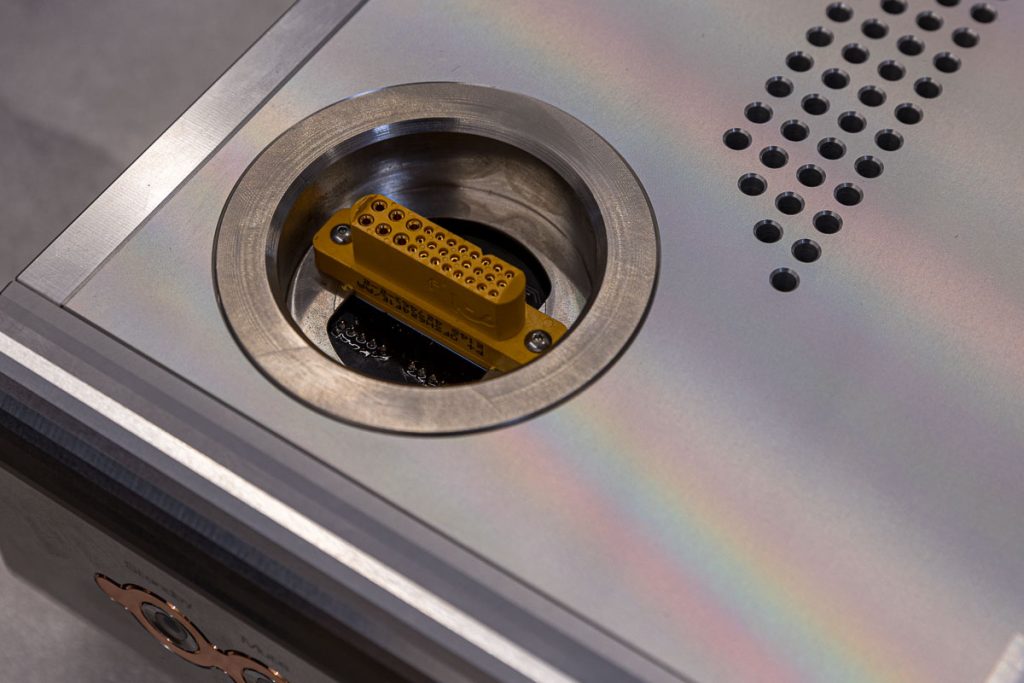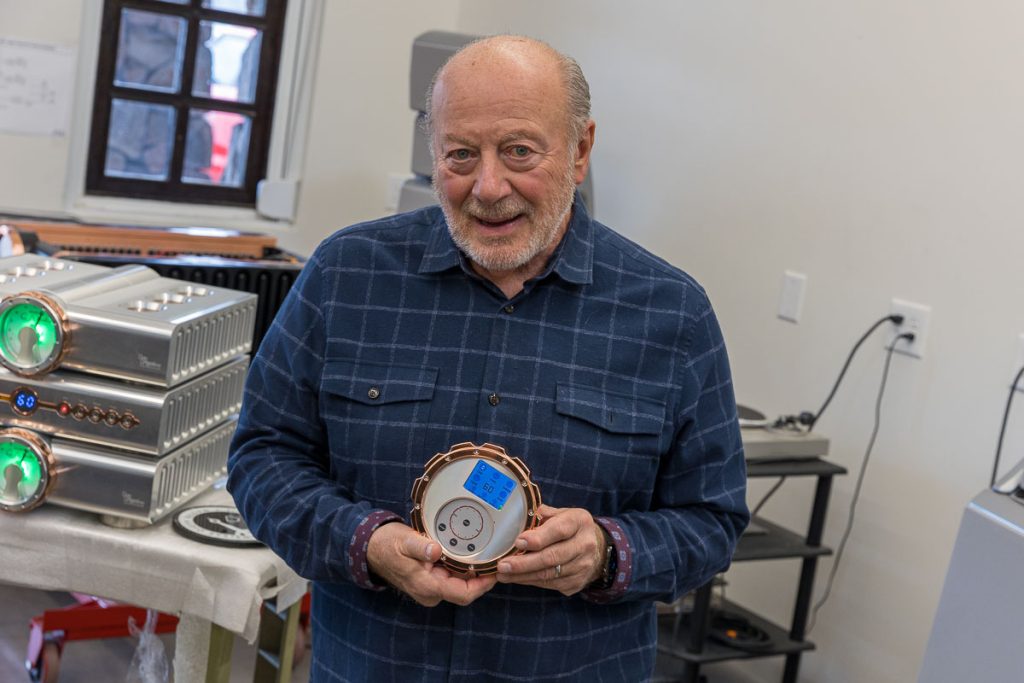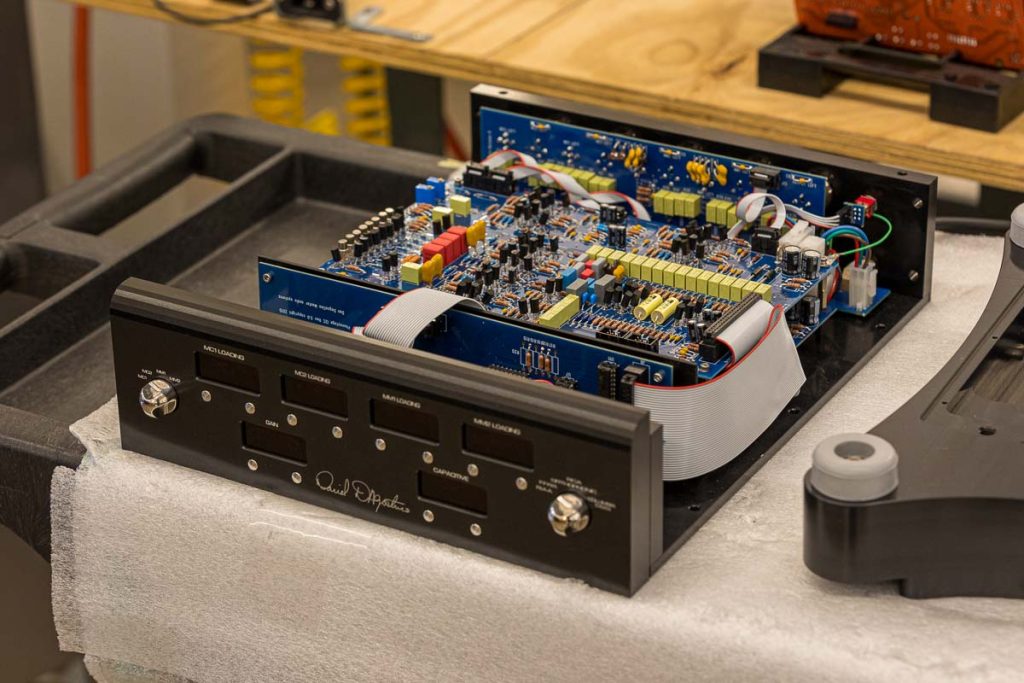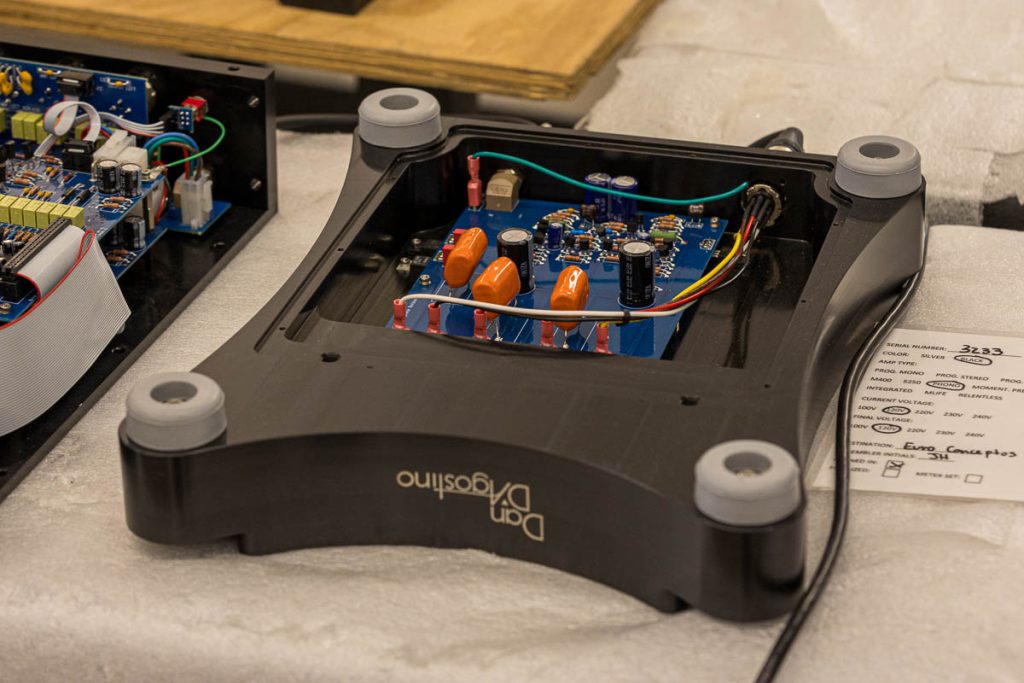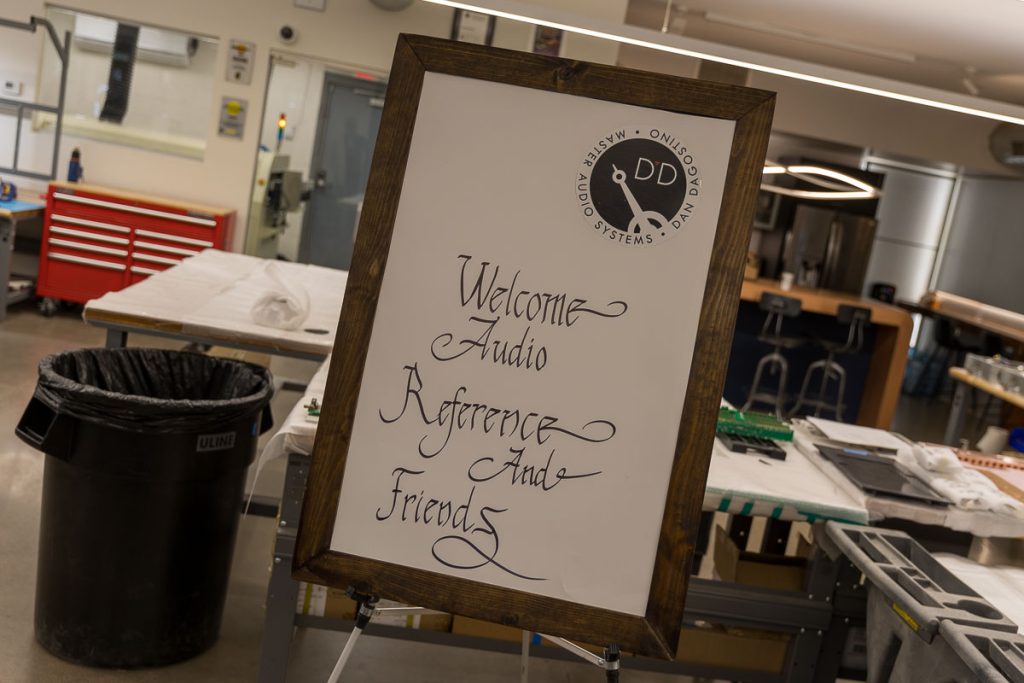I’m not sure about you, but my first notion of headphones or earphones came from my grandfather, Milton, who had one of those little mono earphones plugged into his little transistor radio, listening to Mets games. He let me try it, and even though the sound was a bit staticky and tinny, it was this amazing journey into another world.
Until the Sony Walkman came about, headphones for me meant the following: a) they were cheaper with better sound than any stereo I could afford; b) I used them for mixing and editing when I was on the radio; and c) I didn’t want to disturb my parents when listening to music. Most of all, they offered an affordable option for a junior high school kid. It wasn’t until the Sony Walkman came out, with its decent-sounding open-air lightweight headphones, and the introduction of those smashingly original Sennheiser headphones, that I changed my mind about the sound quality I could get from headphones.
But they didn’t change my mind by much. I still preferred a great stereo getting you in the crotch, as Keith Richards once described rock and roll. In graduate school my uncle’s gift of a pair of now-legendary Sony DR-Z6 headphones, coupled with an early CD player, made me again rethink my relationship to headphones. The gift was the result of work I had helped him with on a Sony account, and they tossed in the headphones as a gift to him, and he had no use for them, so he gave them to me. Perfect – I was sharing a loft with two friends from NYU, and so it was the only way to listen to music without bothering them. But, still, headphones were a fallback way of listening, not my primary way of enjoying music.
Step forward a few years, and suddenly for a new generation of music lovers, headphones and earbuds became the first choice for listening to tunes. How and why this happened, I’m not sure. I think it coincided with the global popularity of the iPod, followed by the rise of cell phones. Now, with the popularity of wireless headphones, the human race seems lost into itself, in solipsism, with a dose of intolerance for others. So, now the most popular way to listen to music is via personal audio. Not surprisingly, the appearance of headphones that cost hundreds of dollars via Beats (introduced in 2006) and Monster Cable’s headphones for Apple made spending a few hundred dollars on headphones not all that unusual. This was basically unthinkable to a previous generation for whom $40 was a lot. That said, there’s a good thing about the acceptance of higher-priced models – there are now more high-end headphones than ever, offering exceptional levels of sound quality, and those advances are trickling down to entry-level models.
So, CanJam, an enthusiastic celebratory gathering of all things headphones, earphones, dedicated amps, DACs, and accessories, offered visitors a choice from $50 units to headphones and electronics costing many thousands of dollars. CanJams are held at various US and international locations, most recently at the New York Marriott Marquis. Everyone there was in high spirits (see John Seetoo’s report in Issue 185). And try as I might to pace myself, there were still systems I saw and meant to get back to for a serious listen, but I ran out of time. I mean, there was a ton of gear!
The table at HeadAmp was a headphone lovers’ dream.
Not only were there dozens of vendors, each table had multiple headphones, systems, and earphones to choose from, as well as the ability to try different amps, DACs, and more. I’ve been trying to explore the differences between in-ears from Westone Audio, with Dave Friesema and Chris Roth of that company patiently allowing me to test various models, all subtly different, stressing different tonal balances. Viewing all the different headphones on display was an embarrassment of riches, including custom molds, various colors, and even experimental custom colors and patterns. There wasn’t a single model from Westone, Etymotic, or others that I’d not have been delighted with.
Sure, we all have different preferences for fit, size, finish, design, and other features. And fit really does matter. I remember the first time Mead Killion of Etymotic sent me some ER-4s and they just didn’t sound that great. He was adamant I was wrong, and the next time we saw each other, at a MacWorld San Francisco, he pulled me aside, dragged me (not exactly kicking and screaming) to a little place to get a beer in Moscone Center, and out of his pocket came a variety of eartips – flanges, mushrooms, and compressible foam types. And I just couldn’t get them to sound amazing, as he said they would, till…till…voila, he found just the right size after peering into my ear canals. Suddenly, the clouds parted, and boom, amazing audio. He just sat there with that well-known twinkle in his eye, and his famous mustache curled at the tips, beaming.
We then spent time just talking physics, fit, the advantages in his mind of a single-driver balanced armature design without multiple drivers, crossovers, and phase distortion. but even Mead created some great dynamic-driver models. And there I was at CanJam listening to models with multiple drivers. And they sounded great! Which means that as with all things in life, there are myriad ways to attack and solve a problem.
I have no dogmatic ideology. In my professional role as a photo curator, photographers and artists will ask me if I have any particular preference or liking for a particular genre, and I say that my ideology is that I have no ideology, that I hold a wide view of what constitutes photographic expression. My only requirement is that the work is well done. And so, my view of music and gear has grown along the same lines. I don’t care who, what, where, the price, the label, all that matters is how it sounds. A product’s basic authenticity is all that matters. The happy visitors at CanJam were interested in dynamic, electrostatic, ladder DACs, Class-A, Class A/B, Class D, clear shiny cables, opaque cables, different chipsets, you name it.
Mirsoslav Milovanovic of EarMen with their product line.
John Tarulli, sales manager at Audio-Technica, showing off the company’s stunning 60th anniversary headphones.
Michael Goodman, founder and CEO of CEntrance, with Periodic Audio’s Benjamin Webster. Here Goodman is holding a new product, the DAC Mini, which pairs up perfectly with a Mac Mini. The DAC Mini provides a professional audio interface for Apple’s smallest computer, adding just about every possible input and output to the Mini.
Much of the fun was once again supplied by small family businesses. Probably the hottest room in the show was ZMF Headphones, hosted by Zach Mehrbach, and his wife Bevin. As soon as I walked into the show and picked up my badge, I asked a colleague where to head first, and he said, ZMF. It was so crowded that I could hardly get in. So, I introduced myself to Zach, and we made plans to meet up later, which we did. The phones themselves are pretty traditional, but with many options of wood choices, design, and finish. I’m not sure why, but it was definitely one of the most happening rooms at the show. I chalked it up to nice-sounding phones, coupled with Zach’s killer smile, and gorgeous wood to inspire listeners.
ZMF wasn’t the only popular booth. On the main floor Audeze was packed, with co-founder Sankar Thiagasamudram leading the crew in showing off their new Maxwell wireless gaming headset. In fact, as I wrote this, I was listening to a pair of his new Manny Marroquin MM-500 headphones, using the EarMen Angel reference portable DAC/amp/preamp. The big news from Audeze for audiophiles is the upcoming release of their MM-100 planar magnetic headphones at $399.00. I’ve not had time to spend with the final production models, as they are just now gearing up to meet an enormous back-order list, but what I did hear from the pre-production sample on hand at CanJam is certainly indicative of where the market is heading – namely high-end sound for low-end spending limits.
Sankar Thiagasamudram, co-founder of Audeze, in front of his booth. Word on the floor was that no one modeled an argyle sweater with greater aplomb.
At the back of the hall, at HIFIMAN, founder Dr. Fang Bian was enthusiastically discussing his new headphones and EF600 Hymalaya Pro DAC/headphone amp, which, with its unique vertical shape, doubles as a headphone stand. Even though they were released last year, the Sundara Closed Back planar magnetic headphones were in use all over the conference. Across the aisle, digital technology company CEntrance and in-ear headphones maker Periodic Audio shared a booth, having a good time showing off their wares. Periodic Audio made me want to sport a white lab coat in the hopes of being treated better by my editor Frank Doris. They’ve always had a solid line-up of first-rate earphones, DACs, and amplifiers, all easily recognized by their branding based on the periodic table. And they’re awfully nice people to boot.
CEntrance is interesting in that it’s been a well-known and respected name in professional audio circles, but they are so low-key in their marketing I doubt that many attendees knew who they were. Years ago I was given a review sample of their DAC. No fancy box; in fact, I think the box contained just the DAC, and well, that was it. It might have also had a slip of paper, but I can’t remember. It was not one of those Apple-type unboxing experiences that are popular on YouTube for reasons I can’t fathom. When I got home and plugged it in, I was just quietly stunned by good it sounded, and it turns out I’m not alone in that opinion. My friends said, “who made this? Never heard of them.” Clearly more folks need to do their research and check them out.
Fanboys and fangirls all gathered round other popular booths. Mytek Audio, Feliks Audio, Chord, Final Audio, iFi Audio, HeadAmp, EarMen, Dekoni Audio, High End by Oz, Focal, Audio-Technica, and others were all stuffed with eager listeners. For those with either really deep pockets or delusions about their bank account, dCS Audio featured their Lina system trio – network DAC, headphone amplifier, and master clock – that ran a cool $31,150. It seemed like the gear on display at CanJam New York was almost divided between around 50 percent being large, heavy, AC-powered amps matched to headphones, while the other half seemed to be as portable as possible. The newest true wireless Bluetooth earphones on display were featherweight, have almost lossless audio codecs, plus impressive sound and long battery life. Ultimately, I think it’s all about your relationship to audio and the role headphones play in it. Maybe it’s all about portability, or maybe your tastes run to a 30 pound tube amp and a DAC on your desktop.

Audio engineers have long had a different relationship to “cans,” typically using them for mixing and editing sessions where precise, accurate sound is desired. On the other hand, every engineer I’ve known relies on speakers for their final mixes. One term you hear bandied about is “reference,” which ostensibly means that the products are designed to be as accurate, and as flat in frequency response as possible. Accordingly, an engineer using them would be able to hear precisely the sound coming out of the mixing board, with as little influence from the headphones themselves. And I certainly have a stack of those kinds of phones to use when reviewing. However, most folks have discovered that we want a bit more personality in our speakers and headphones, maybe a bit more bass, or tamed high-end, whatever. I mean unless you’re a recording engineer or audio professional who needs accuracy, I think the idea of “reference” headphones doesn’t matter at all, and what makes you happy and keeps your toes-a-tapping is what counts. That being said, Stax headphones have a devoted following, both in the studio and out, so there’s that.
I have always found it interesting that many of my engineer friends had headphones and speakers for the studio, but often a different set to listen to for enjoyment at home or on the go. Once again, one person’s prized reference phones is another’s flat, boring, and unexciting. To each their own. It’s like hearing the old question, “what’s the best camera?” This is best answered by, “the camera you have with you.” Even a cheapo pair of free in-flight earphones beats the expensive pair of noise-cancelling phones you left charging on the counter at home on your way to the airport.
David Chesky’s newest venture, The Audiophile Society, offers separate mixes of their recordings for speakers, and for headphones. This isn’t a new idea, but what makes is cool is that it provides a valuable approach to understanding the difference between in-ear earphones, over-ear headphones, and speakers in terms of the microphone and other choices recording engineers might choose. At the moment, audiophiles have few options for this type of discovery, so I welcome Chesky’s new venture.
CanJam New York’s location, just off Times Square, was easy to get to, with plenty of food options at the venue and nearby. It ran smoothly, evidence of the expertise of head-of-ship Ethan Opolion and his staff. The audio press was there in full force – given how many of them live in the New York area, that wasn’t a surprise. Dr. Fang Bian sponsored a fabulous Italian meal for the press at Becco, which was not only a wonderful gathering with amazing food with almost no discussion of audio, serving as a reminder of life before the pandemic. Just friends and colleagues having a great night out.
If you are serious about personal audio, I can’t recommend CanJam highly enough. Not only is it a blast, it’s a high-energy but relaxed blast, as paradoxical as that might sound. There are upcoming CanJam shows year-round – they’ll be in Chicago, London, Orange County, California, and Dallas during the rest of 2023, and the New York show returns in March 2024. For more information, click here.
Here are more photos from CanJam 2023.
Michal Jurewicz (Mytek Audio) and Kalman Rubinson (Stereophile) prepare for the crowds.
Kudo, Hara, and Kyo of Final were showing off their new flagship ZE8000 Bluetooth 5.2-equipped true wireless system with active noise cancellation earphones.
Liz Rivera of iFi Audio even managed to get the notoriously tough Herb Reichert (Stereophile) to smile!
Alexandra and Andy Beane made it a couples day at CanJam, here holding onto a pair of HIFIMAN AUDIVINA headphones.
Perry Damiri (Austrian Audio) and Adam Sohmer (Sohmer Associates, representing HIFIMAN at the show) chilling out.
CanJam fan Lonjezo Frank didn’t just have the coolest African Batik shirt at the show, he was spotted holding some stylish HIFIMAN headphones. Move over, Mr. Audiophiliac!
Sankar Thiagasamudram (Audeze), Carlo Lo Raso (Secrets of Home Theater and High Fidelity), and Howard Kneller (The Listening Chair, Copper) take a break.
Zach Mehrbach (ZMF Headphones) and Ozan Turan (
High End by Oz) are enjoying the show.
Michael, Lukasz, and Piotr Feliks of Feliks Audio exhibited a variety of velvety smooth tube headphone amps, all built by hand in Poland. Some listeners consider their creations to be amongst the best-sounding headphone amplifiers in the industry. Another family-led audio company!
Damian Mosiolek and Michal Jurewicz of Mytek Audio.
Two audio-industry public relations maestros, Adam Sohmer and Sara Trujillo (Trujillo Public Relations) enjoying a moment away from their respective booths.
Here's HeadAmp founder Justin Wilson with Marrissa Jones and Eric Neff. A big shout out to HeadAmp for giving the author a very cool knit cap that kept him warm in the cold, howling winds of a New York City winter. It almost made him look hip for a moment.
HeadAmp had a lively crowd.
Mirsoslav Milovanovic of EarMan with a fan.
The Dekoni Audio featured their new Dekoni X HIFIMAN COBALT headphones, a joint venture with HIFIMAN. To demonstrate them they paired it with the Geshelli Labs Archel 3 pro headphone amplifier.
Chris Berens of Audeze demonstrating the company’s wares.
Here's the Violectric Niimbus US 5 Pro headphone amp. It was the first one the author had seen in the flesh.
This is the kit that Lucid Audio brought to the show, so that listeners could quickly differentiate between models. The author’s favorites? I’m not telling!
I’m convinced they’ll let just about any riff-raff into the show, exemplified here by the renowned Pedro Díaz (English horn player for the Metropolitan Opera), Herb Reichert, and Michael Trei (Stereophile), who are clearly preparing for no good.
Sherri L. Smith (LAPTOP magazine) and Frank Vizard (Popular Mechanics, Luxury magazine) relaxing during the HIFIMAN dinner at famed Italian restaurant Becco.
Dr. Fang Bian and Karl Sigman (Audiophilia) at Becco.
Quite possibly the best scallops the author has ever had. Diver scallops with pink peppercorns, orange segments, micro greens and tangerine agrumato! Becco rocks!
Dr. Fang Bian and his wife Lei Lei at Becco.
The $31,150 dCS Lina system trio – network DAC, headphone amplifier, and master clock – sounded heavenly.
Wendy Knowles of Focal Naim America with Robert S. Anthony (Stadium Circle Features) in another jammed booth, with a wide-range of models for folks to experience.
CanJam director Ethan Opolion kept a cool head no matter how much was swirling around him, which included 80 exhibitors and over 2,500 attendees!
The iFi Team at CanJam: Carter Keller, Kris Cadman, Liz Rivera, Phillip Mann, and Jamie Lauffeer.
CanJam fans unite! Anupam Saxena (Dewberry), Gene Tambor (Minetta Creek), Miguel Barrio, Parker Lichfield (Senior Engineer at Soundsmith), Steve Guttenberg (The Audiophiliac), and Herb Reichert.
Here's Frank Schramm of Mac Edition Radio with Giordano Zacchini, CEO and chairman of Spirit Torino headphones.
Header image: Zach and Bevin Mehrbach of ZMF Headphones are all smiles in a packed room full of enthusiasts.




